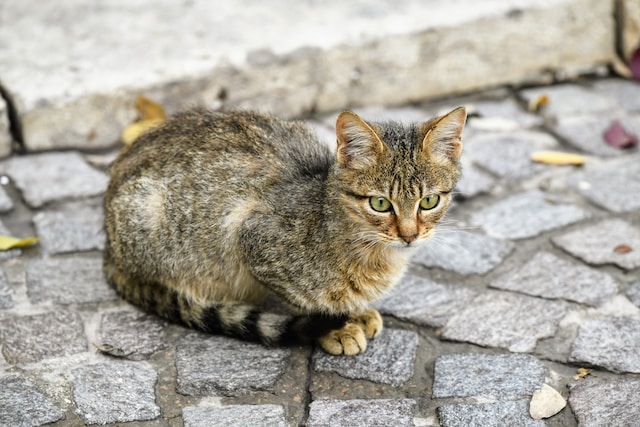In the shadows of our cities, a silent struggle for survival unfolds. Feral cats, those born and raised on the streets, face a myriad of challenges as they navigate the harsh realities of urban life. This article explores the hurdles and hardships that feral cats overcome daily, shedding light on their remarkable resilience and the strategies they employ to carve out a life amidst adversity.
One of the most significant challenges feral cats face is the constant quest for food. Unlike their domestic counterparts, these felines do not have the luxury of a consistent food source provided by humans. Instead, they rely on their innate hunting instincts to secure sustenance. Street rats, mice, and small birds become their primary targets as they skillfully stalk and pounce on their prey. This predatory prowess is crucial for their survival, as it allows them to obtain the necessary nutrients to sustain their energy levels and overall health.
Another obstacle feral cats must conquer is finding shelter in an unforgiving urban landscape. With limited safe havens available, they seek refuge in abandoned buildings, cramped alleyways, and hidden crevices. These makeshift shelters provide protection from the elements, potential predators, and the bustling activity of the city. Their ability to adapt to these less-than-ideal environments is a testament to their resilience and resourcefulness.
The issue of safety is a constant concern for feral cats. Navigating busy streets and encountering vehicular traffic poses a significant threat to their well-being. Additionally, conflicts with other territorial animals and the risk of mistreatment or abuse from humans further compound their challenges. Feral cats, however, possess an inherent sense of survival instincts. They have honed their abilities to quickly assess potential dangers and swiftly maneuver through the urban maze, allowing them to evade harm and minimize risks.
Healthcare is yet another obstacle faced by feral cats. Without regular veterinary care, they are vulnerable to a range of diseases and parasites. Their exposure to the elements and lack of proper nutrition exacerbate these risks. However, numerous organizations and volunteers dedicate their efforts to address the healthcare needs of feral cats through trap-neuter-return (TNR) programs. These initiatives aim to reduce overpopulation, prevent the spread of diseases, and improve the overall welfare of feral cat communities.
Despite the challenges, feral cats are not entirely without support. Compassionate individuals and animal welfare organizations advocate for their well-being, providing food, water, and even establishing managed colonies in certain areas. These efforts not only alleviate some of the hardships faced by feral cats but also promote a more harmonious coexistence between humans and these resilient feline residents.
Understanding and addressing the challenges of street life for feral cats is essential for fostering empathy and advocating for their welfare. Education and public awareness play a crucial role in dispelling misconceptions and promoting responsible pet ownership. It is through collective efforts, including supporting TNR programs, providing resources for feral cat caregivers, and advocating for legislation that protects their rights, that we can create a more compassionate and inclusive society for all living beings, regardless of their circumstances.
In conclusion, feral cats face numerous obstacles in their daily struggle to survive on the streets. From the constant search for food and shelter to the need for safety and healthcare, their resilience and adaptability shine through. By recognizing their inherent challenges and working towards creating a supportive environment, we can ensure that these remarkable creatures are given a chance to thrive in their urban habitats.




